Regimental Crests Window
The Regimental Crests Window, shown below, is made up of stained glass crests which originally appeared on two separate windows.
In the late 1960s, the Church of Scotland Canteen in Mandora Road, Aldershot was demolished and around this time St Andrew’s Garrison Church acquired the circular stained glass window with 12 small, round, Scottish, regimental crests which had originally been erected in this canteen. The stained glass window was then stored, rather than erected. (These are the stained glass crests numbered 6 to 17 below.)
Later another stained glass window, with five larger regimental crests on it (none of them specifically Scottish regiments), was acquired from Smith Dorrien House, Queen’s Avenue, Aldershot. The five crests on this window date from the early part of the Twentieth Century. One of the crests is that of the Royal Engineers. It has the cypher of Edward VII (1901-1910) on it. Another crest is that of the Army Service Corps which became the Royal Army Service Corps in 1918. (These are the stained glass crests numbered 1 to 5 below.)
In the early 1980s, Rev David Reid, who was minister at the time, came across both windows and proposed incorporating them in one new window for the church. The cost of the new stained glass was met by the trustees of the St Andrew’s Scottish Soldiers Club Fund.
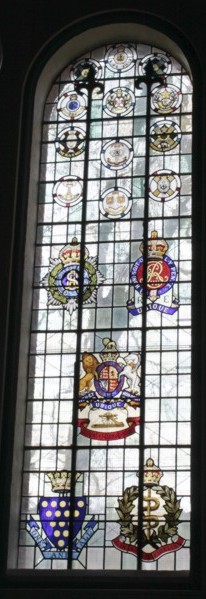
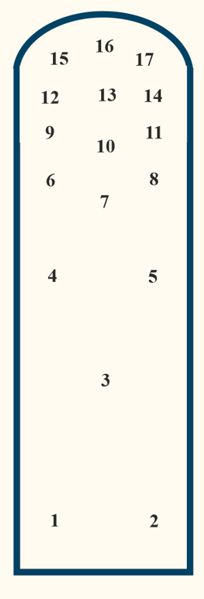
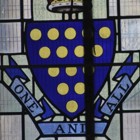 |
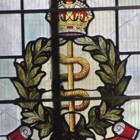 |
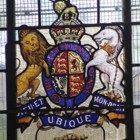
|
1. Duke of
Cornwall’s
Light
Infantrya | 2. Royal Army
Medical Corps | 3. Royal Artillery
|
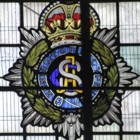 |

|
4. Army
Service Corps | 5. Royal Engineers
|
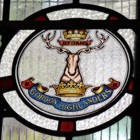 |
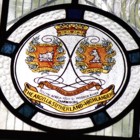 |
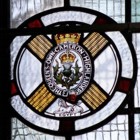 |
6. Gordon
Highlanders | 7. Argyll &
Sutherland
Highlanders | 8. Cameron
Highlanders |
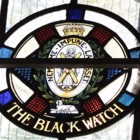 |
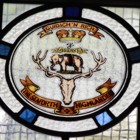 |
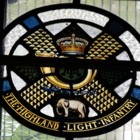 |
9. The Black
Watch | 10. Seaforth
Highlanders | 11. Highland
Light Infantry |
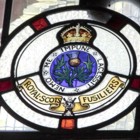 |
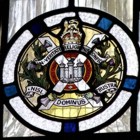 |
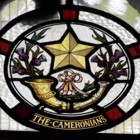
|
12. Royal Scots
Fusiliers | 13. King’s Own
Scottish
Borderers | 14. Cameronians
|
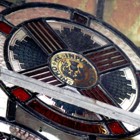
|
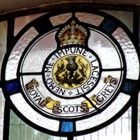 |
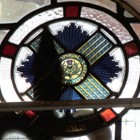 |
15. Scots Guards
| 16. Royal Scots
Greys | 17. The Royal
Scots |
Cameron Chapel Stones
There are 12 stones set into the brickwork of the back wall of the Cameron Chapel.
The stones show regimental crests, from the Second World War, principally of Scottish regiments. The designs appear to have been modelled mainly on cap badges.
It was originally thought that the stones were made by German prisoners of war. This is probably incorrect. Further research has found fairly strong evidence that the stones were carved by one British soldier, who was possibly injured and recovering at the time. There is contemporaneous evidence, from the 1940s, of such stones being located at two war time Army Churches of Scotland in Egypt, namely St Andrew’s Kirk, Geneifa, Egypt (in the Canal Zone), and St Margaret’s Church in Abbassia (near Cairo). The stones at St Andrew’s Aldershot almost certainly come from one or other of those two churches, or possibly both of them - the documnetary evidence so far come across does not completely exclude the possibility that the stones were designed for the Geneifa church, but ultimately more permanently fitted to the Abbassia church.
The stones then moved, via a brief spell in Cyprus, to St Andrew’s Garrison Church, Aldershot. Some are in good condition, others are badly worn. (For fuller details of the history of the stones see the History section of this website - p3 "Church Memorials".)
The complete set is displayed below along with a plan of their position on the back wall of the Cameron Chapel.
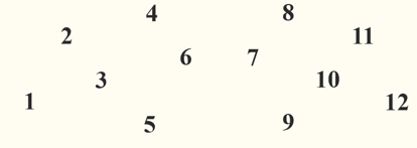
Plan of regimental stones on back wall of Cameron Chapel.
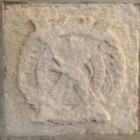 |
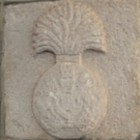 |
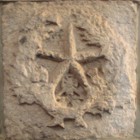 |
1. London
Scottish | 2. Royal Scots
Fusiliers | 3. The Cameronians
(Scottish Rifles) |
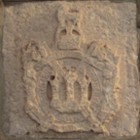 |
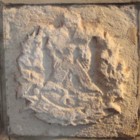 |
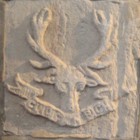 |
4. King’s Own
Scottish Borderers | 5. Cameron
Highlanders | 6. Seaforth
Highlanders |
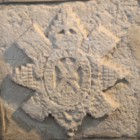 |
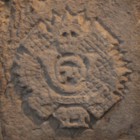 |
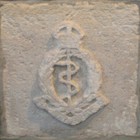 |
7. Black Watch
| 8. Highland
Light
Infantry | 9. Royal Army
Medical Corps |
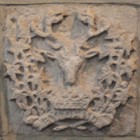 |
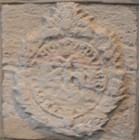 |
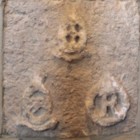 |
10. Gordon
Highlanders
| 11. Argyll &
Sutherland
Highlanders
| 12. Top: Queen
Alexandra’s
Imperial
Military
Nursing
Service
Left: probably
Territorial
Army Nursing
Serviceb
Right: Queen
Alexandra’s
Imperial
Military
Nursing
Service
Reserve |
Footnotes
a: The design of this shield, crown and motto are those used on the arms of the Duke of Cornwall’s Light Infantry. However the background colour of the shield should be black, not dark blue as here.
b: The centre of this badge is too badly worn to be 100% certain as to its identification.